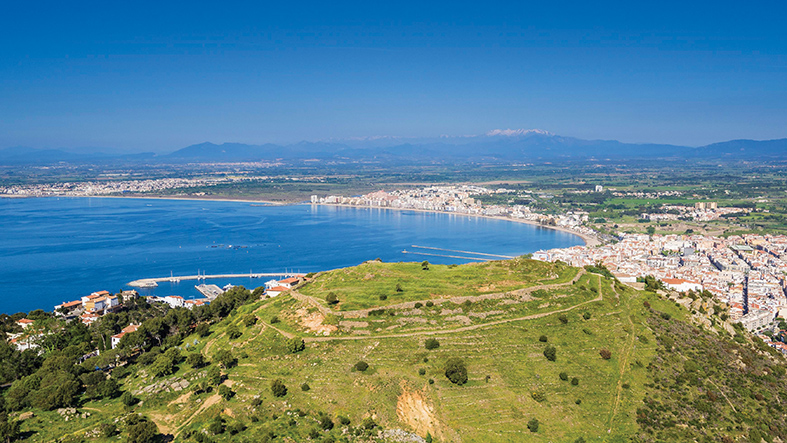Castrum Visigotic
Castrum or Visigothic Citadel of Puig Rom , the castrum is located on one of the peaks of Puig Rom mountain, which crowns the town of Roses. It was discovered in 1946 by the works of Lluís Pericot, Francesc Riuró, Miquel Oliva and Pere de Palol with the help of the General Captaincy of Catalonia.
It is a fortified hill with two quadrangular towers that are placed to the sides of the door of access to the set. The wall is structured by two walls between which was introduced a land fill and small stones.
Taking into account the dating of the objects found in the excavation it is considered that life in the castrum lasted from the second half of the 7th century to the first quarter of the 8th century.
When the Roman Empire of the West disintegrated, towards the beginning of the fifth century , there was a penetration of Alans in the Ampurdán. The Visigoths were at that time in the service of Rome, and were therefore called to contain the Alans. In the year 415 entered Ataulfo in Spain to the service of the empire and taking with him to Goths. However, after having content the Alans, he is assassinated by his own people because of his submission to the Emperor of Rome. From that moment begins the relatively brief Visigothic period of the Peninsula.
Objects found in excavations:
-Visigoth coins
– Roman coins
– Multiple instruments of iron that had agricultural purpose
– Visigoth belts
– Ornamental objects of Byzantine origin
– A visigoda spoon
– Ceramics, similar to that of the necropolis of Simancas

